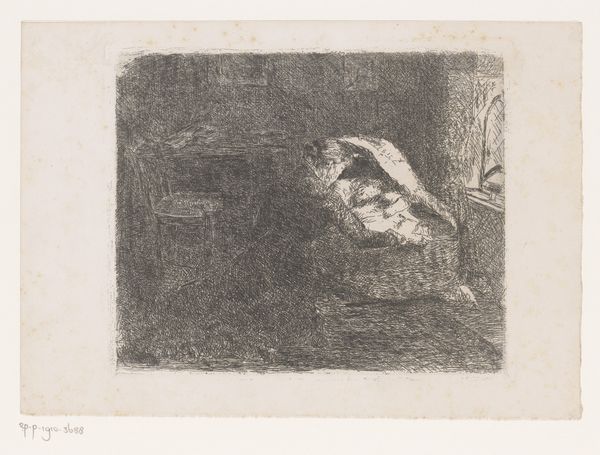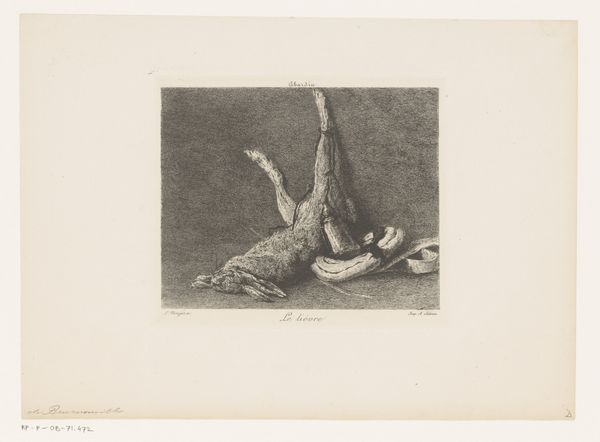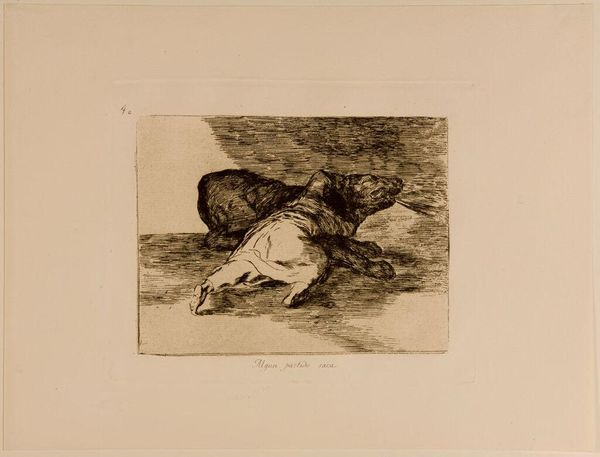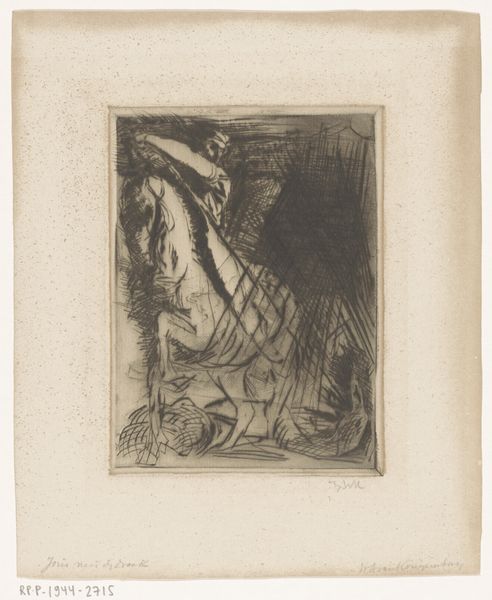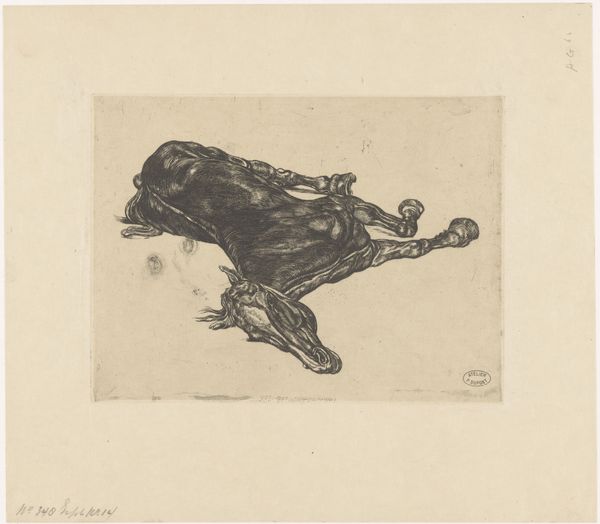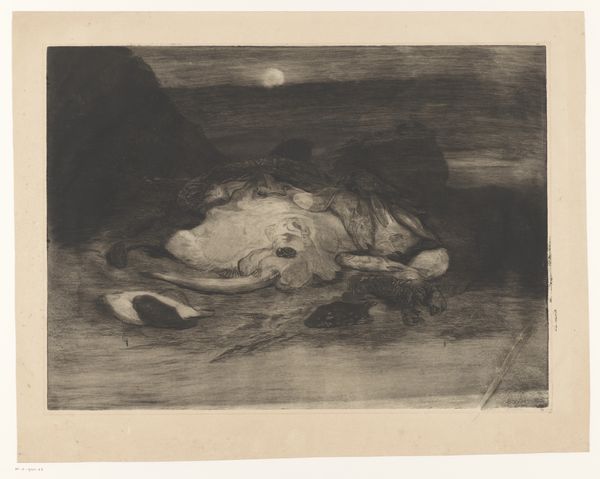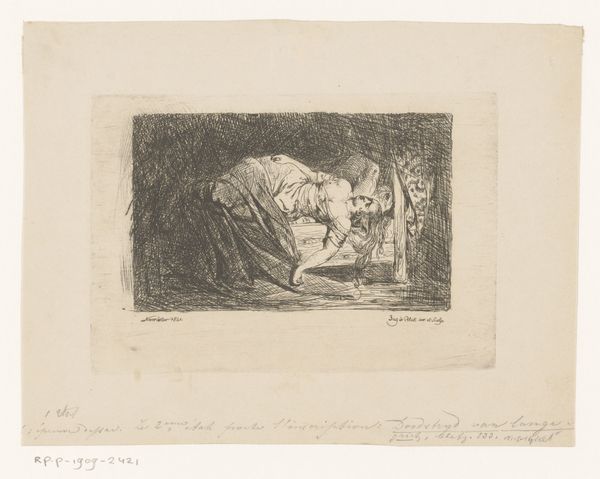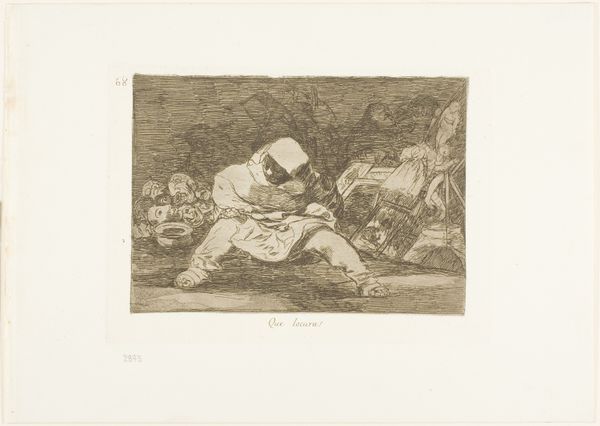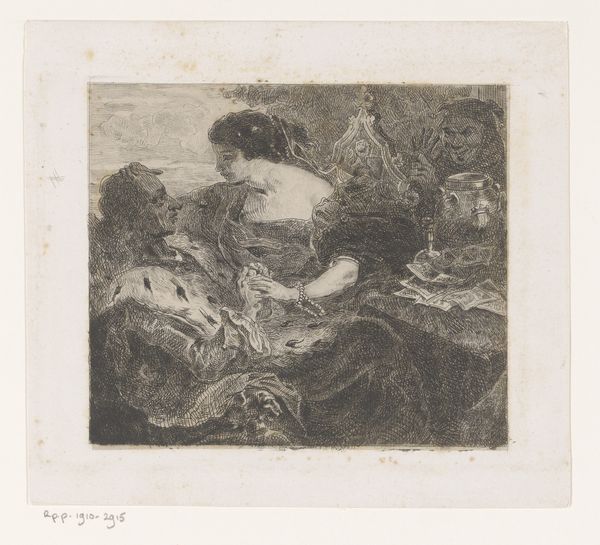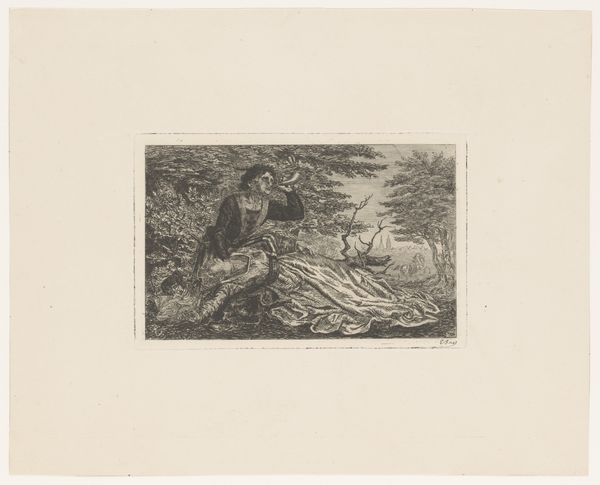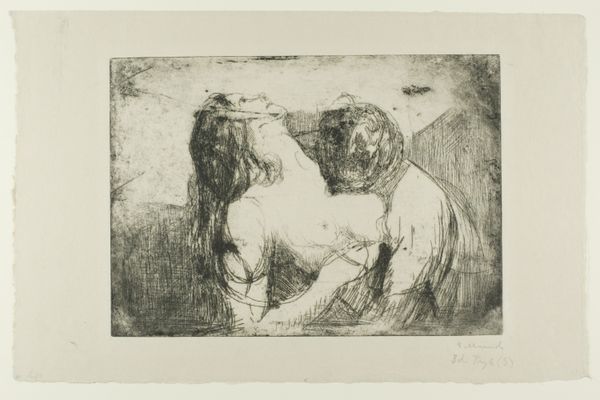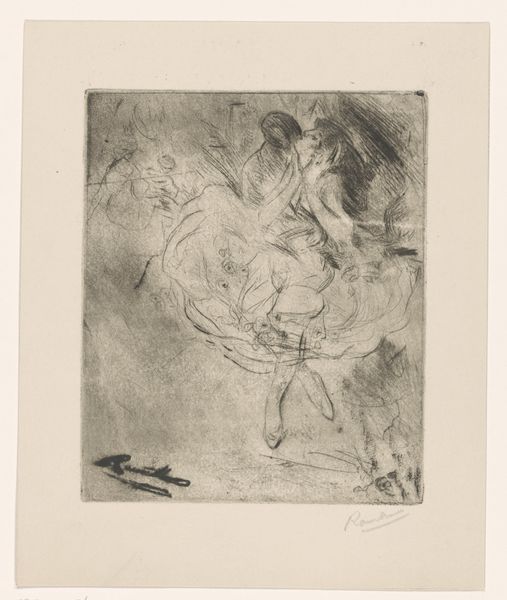
He gets something out of it, plate 40 from The Disasters of War Possibly 1814 - 1863
0:00
0:00
drawing, print, etching, paper
#
drawing
#
narrative-art
# print
#
etching
#
war
#
figuration
#
paper
#
romanticism
#
history-painting
Dimensions: 140 × 187 mm (image); 175 × 220 mm (plate); 240 × 340 mm (sheet)
Copyright: Public Domain
Curator: Goya's work, specifically from his "Disasters of War" series, consistently leaves me unsettled. Editor: In front of us is plate 40 from that very series, a print titled "He gets something out of it." Etched by Goya, likely between 1814 and 1863, it currently resides at the Art Institute of Chicago. There is something terribly unsettling about it, isn’t there? Curator: Horrifying, I would say. The stark contrast of the figures contorted in agony, caught in what seems to be their final moments. There’s a brutality in the simplicity, a visceral rawness that bypasses thought and goes straight to the gut. And this dark romanticism, too... what can you say of it? Editor: Absolutely. The pose screams sacrifice and desperation. Note the splayed limbs, the unnatural twist of the bodies. In terms of visual language, Goya brilliantly used shadow here. Light picks out the horror of it, while the darker areas hint at the unknown terrors lurking just beyond. We're witnessing not just death, but the psychological space of dread. Curator: You know, I read it almost as the person on the ground making one final offering from their corpse, while a man has crawled into frame to snatch what he can from it. A grim acceptance, perhaps? Maybe of being so poor or abused that even his final moment doesn’t belong to him. Editor: Possibly. Consider this—war strips everything back to basic instincts: survival, greed, desperation. That man crawling towards the body could represent those base impulses consuming humanity. But look closer – isn’t the phrase “he gets something out of it” also drenched in irony? It’s so easy to apply, given its broad ambiguity! Curator: Irony, indeed. It’s difficult to extract something beautiful or meaningful out of such depravity. A black sun is the best one could hope for. The etching process itself, with its harsh lines and acid bites, becomes a metaphor for the violence it depicts. Editor: And there you have it – romanticism reflecting upon itself through ruin, despair and dark dreams. A cultural memory permanently scarred into this piece. What is there to take away from this other than being left to face some terrible, timeless truth? Curator: A profound question for all who dare to dwell in this work! Goya forces us to confront the darker corners of human existence... even when we would rather not look.
Comments
No comments
Be the first to comment and join the conversation on the ultimate creative platform.
